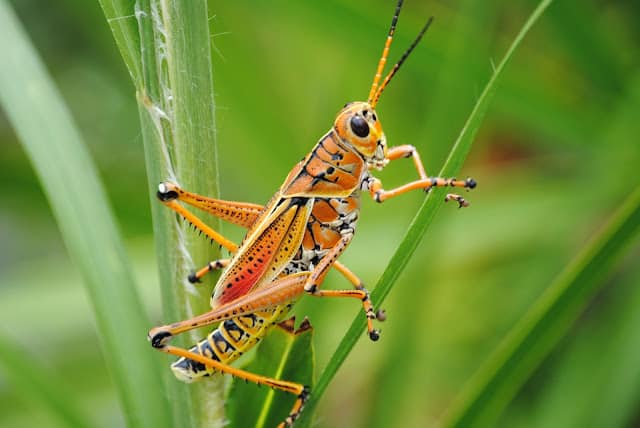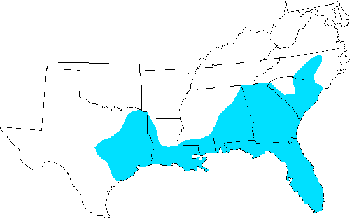Grasshoppers are common insects. Often seen and heard during thewarmer months here in the U.S., they are symbolic of summer and outdoor activities. In Florida the Eastern Lubber (Romalea microptera) is our most observed species. They are large (3 inches), brightly colored, flightless and slow moving.
Lubber’s distribution is in the “U.S Subtropics,” as you can see by the map
When we begin to see them in the spring, they are small black nymphs with yellow stripes. They moult through five instars and as they do, they change color to the yellow/orange with black spots in the first photo. Above, this “teenager” is growing bigger, but still dark colored.
Being “popular” insects, grasshoppers were studied long ago! Grasshoppers are herbivorous, and although harmless to humans, some can do significant damage to crops. Want to know more about our insect world….get a copy of the “Field Guide to Insects of North America,” by my Facebook friend, Eric Eaton.
Here’s another book I liked.
Fabled in story, song and even poetry…..here’s a grasshopper ode!
The Grasshopper
Grasshopper
grasshopper
all day long
we hear your scraping
summer song
like
rusty
fiddles
in
the
grass
as through
the meadow
path
we pass
such funny legs
such funny feet
and how we wonder
what you eat
maybe a single blink of dew
sipped from a clover leaf would do
then high in air
once more you spring
to fall in grass again
and sing.
Conrad Potter AikenBelow is a Lubber growing larger, but still black with yellow stripes.
Wiki link for Lubbers
See if you can find the grasshopper in this classic Hokusai painting!And here is a cohort of young lubber instars!
Steven Scott
Steven Scott is a photonaturalist blogger based in Florida and Maine. He has surveyed butterflies with Earthwatch Institute in the mountains of Vietnam, tagged juvenile snook with Mote Marine Laboratory in the mangroves of Florida and filmed a BioBlitz insect survey in Acadia National Park. A registered nurse and retired Army officer, Steven believes man is an integral part of nature and travels annually to Vietnam with humanitarian medical teams from Vets With a Mission.







Leave a Reply